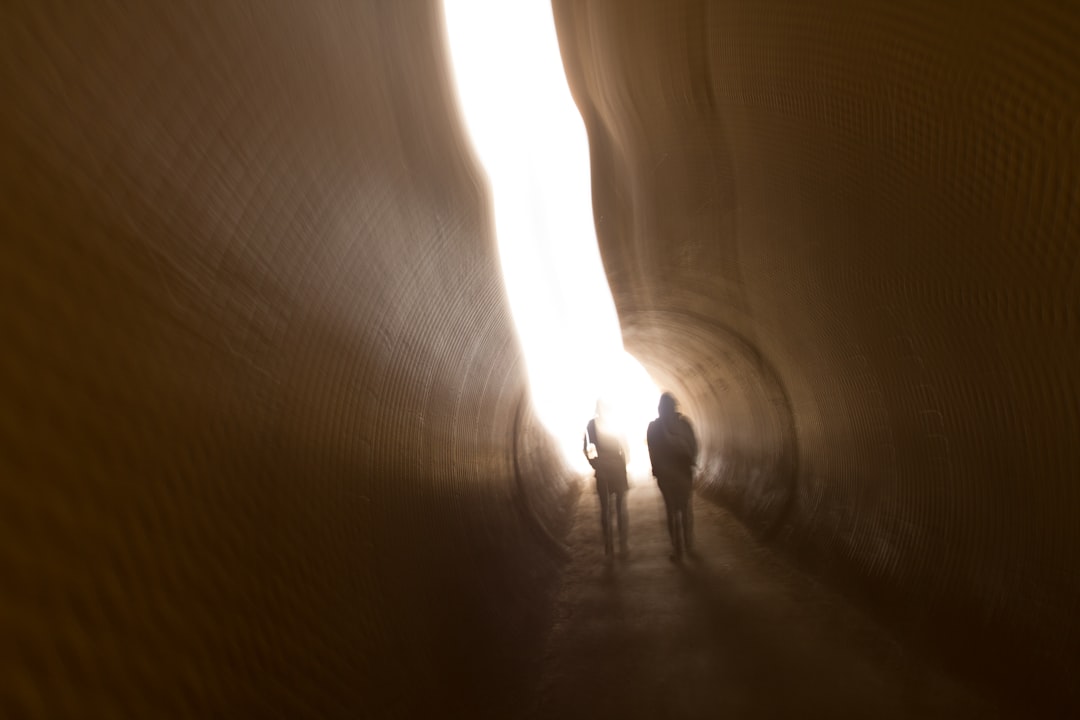The Drake Passage serves as a vital conduit between the southern tip of South America and the icy expanse of Antarctica. This narrow stretch of water, measuring approximately 600 miles in width, is not only a geographical landmark but also a significant point of entry for explorers, researchers, and tourists eager to experience the wonders of the Antarctic region. The passage is named after Sir Francis Drake, the English sea captain and navigator who was the first to sail through these waters in the late 16th century.
Today, it stands as a testament to the spirit of exploration and adventure that has characterized human interaction with the polar regions. As the only sea route to Antarctica, the Drake Passage has become synonymous with the allure of the unknown. It is often the first taste of the Antarctic experience for many travelers, who embark on voyages that promise breathtaking landscapes and encounters with unique wildlife.
The passage not only connects two continents but also serves as a reminder of the vastness and beauty of the natural world. For those who dare to traverse its waters, the Drake Passage offers a glimpse into a realm where nature reigns supreme, and human presence is but a fleeting moment in time.
Key Takeaways
- The Drake Passage is the gateway to Antarctica, connecting the Atlantic and Pacific Oceans.
- The treacherous waters of the Drake Passage are known for their rough seas and strong winds, making it a challenging crossing for sailors.
- Wildlife encounters in the Drake Passage include sightings of whales, seals, and various seabird species.
- The Drake Passage holds historical significance as the route taken by famous explorers such as Sir Francis Drake and Ernest Shackleton.
- Sailing through the Drake Passage is a thrilling experience, offering stunning views of icebergs and glaciers.
The treacherous waters of the Drake Passage
Navigating the Drake Passage is no small feat; its waters are notorious for their unpredictable and often tumultuous conditions. The confluence of the Atlantic and Pacific Oceans creates a unique environment where powerful currents and fierce winds converge, resulting in some of the roughest seas on the planet. Sailors and adventurers alike have long shared tales of their experiences battling towering waves and relentless storms, making the passage both a challenge and a rite of passage for those seeking to reach Antarctica.
This volatility has earned it a reputation as one of the most dangerous maritime routes in the world. Despite these challenges, many seasoned sailors embrace the thrill of navigating these waters, viewing it as an integral part of their journey to one of Earth’s last frontiers.
The passage serves as a reminder of nature’s raw power and unpredictability, compelling those who venture into its depths to respect its might.
Wildlife encounters in the Drake Passage

The Drake Passage is not only a gateway to Antarctica but also a rich habitat teeming with diverse marine life. As travelers embark on their journeys through these waters, they are often treated to spectacular wildlife encounters that leave lasting impressions. From majestic albatrosses soaring overhead to playful seals basking on ice floes, the passage offers a unique opportunity to witness some of nature’s most remarkable creatures in their natural habitat.
Among the most captivating sights are the various species of whales that frequent these waters. Humpback whales, orcas, and minke whales are just a few of the giants that can be spotted during voyages through the Drake Passage. These magnificent mammals often breach the surface, providing awe-inspiring displays that captivate onlookers.
Birdwatchers also find delight in observing numerous seabird species that thrive in this region, making it a paradise for nature enthusiasts eager to connect with wildlife in an unspoiled environment.
Historical significance of the Drake Passage
| Aspect | Details |
|---|---|
| Discovery | The Drake Passage was discovered by the English privateer Sir Francis Drake in 1578. |
| Exploration | It has been a key route for exploration to the Antarctic region, with many expeditions passing through. |
| Scientific Significance | It is an important area for scientific research, particularly in oceanography and climate studies. |
| Maritime History | The passage has been a challenging route for maritime travel, with many historical shipwrecks. |
The historical significance of the Drake Passage extends far beyond its geographical boundaries. It has played a pivotal role in maritime exploration and trade since its discovery. Early explorers sought to navigate these treacherous waters in search of new trade routes and territories, driven by ambition and curiosity about what lay beyond the horizon.
The passage became a crucial link for explorers like Sir Francis Drake, who sought to circumnavigate the globe and expand European influence during the Age of Exploration. In addition to its role in exploration, the Drake Passage has also been a site of significant scientific research and discovery. The waters have been instrumental in understanding ocean currents, climate patterns, and marine ecosystems.
Researchers have utilized this unique environment to study everything from glacial movements to biodiversity, contributing valuable insights into global environmental changes. The historical narrative woven into the fabric of the Drake Passage reflects humanity’s enduring quest for knowledge and understanding of our planet’s most remote regions.
Sailing through the Drake Passage: A thrilling experience
For many adventurers, sailing through the Drake Passage is an exhilarating experience that combines elements of thrill and wonder. As vessels navigate these storied waters, passengers are often filled with anticipation and excitement about what lies ahead. The journey itself becomes an integral part of their Antarctic adventure, with each wave and gust of wind serving as a reminder of nature’s grandeur.
The experience is heightened by the camaraderie that develops among travelers aboard these ships. Shared moments of awe as they witness breathtaking landscapes or encounter wildlife create lasting bonds among those on board. Whether it’s huddling together on deck during rough seas or celebrating calm moments under clear skies, sailing through the Drake Passage fosters a sense of community among adventurers united by their love for exploration.
Each journey becomes a personal narrative woven into the larger tapestry of human connection with nature.
The geological wonders of the Drake Passage

The geological features of the Drake Passage are as captivating as its wildlife and history. This region is characterized by dramatic underwater topography, including deep-sea trenches and submerged mountain ranges that tell stories of Earth’s geological past. The passage is situated at a tectonic boundary where the South American Plate meets the Scotia Plate, resulting in unique geological formations that intrigue scientists and geologists alike.
The underwater landscape is not only visually stunning but also plays a crucial role in shaping ocean currents and marine ecosystems. The interaction between these geological features influences nutrient distribution in the water, supporting diverse marine life that thrives in this rich environment. As researchers continue to study these geological wonders, they uncover insights into Earth’s history and its ongoing evolution, further emphasizing the significance of the Drake Passage as both a natural marvel and a scientific treasure trove.
Weather and climate in the Drake Passage
The weather and climate conditions in the Drake Passage are notoriously variable, influenced by its geographical location and surrounding oceanic systems. Travelers can expect rapid changes in weather patterns, with sunny skies giving way to sudden storms within moments. This unpredictability is largely due to the convergence of cold Antarctic waters with warmer currents from the north, creating an environment where conditions can shift dramatically.
Temperatures in the Drake Passage can vary significantly depending on the season, with summer months offering milder conditions while winter brings frigid temperatures and harsh winds. These climatic variations not only impact navigation but also play a crucial role in shaping marine ecosystems and wildlife behavior. Understanding these weather patterns is essential for those venturing into this region, as they must be prepared for whatever nature may throw their way during their journey through this remarkable passage.
Exploring the islands of the Drake Passage
The islands scattered throughout the Drake Passage add another layer of intrigue to this already captivating region. These remote landmasses serve as vital habitats for various species and offer unique opportunities for exploration. Some islands are known for their rugged beauty, featuring dramatic cliffs and pristine beaches that attract adventurers seeking solitude amidst nature’s splendor.
Among these islands are notable destinations such as Deception Island, famous for its volcanic activity and unique caldera landscape, and Half Moon Island, which boasts stunning views and rich wildlife populations. Each island presents its own distinct character and charm, inviting travelers to explore their shores and immerse themselves in their natural beauty. The exploration of these islands enhances the overall experience of navigating through the Drake Passage, providing opportunities for hiking, wildlife observation, and photography against breathtaking backdrops.
Scientific research in the Drake Passage
The Drake Passage has become a focal point for scientific research aimed at understanding climate change, oceanography, and marine biology. Researchers from around the world flock to this region to study its unique ecosystems and gather data that can inform global environmental policies.
One significant area of research involves studying krill populations, which play a crucial role in the Antarctic food web. These small crustaceans are essential for sustaining larger species such as whales, seals, and penguins. By monitoring krill populations in relation to changing ocean temperatures and ice cover, scientists can gain insights into broader ecological shifts occurring within this fragile environment.
The ongoing research conducted in the Drake Passage underscores its importance not only as a gateway to Antarctica but also as a critical site for advancing scientific knowledge about our planet’s changing climate.
The allure of adventure tourism in the Drake Passage
Adventure tourism has flourished in recent years, with many travelers seeking out unique experiences that push them beyond their comfort zones. The Drake Passage has emerged as a prime destination for those looking to embark on thrilling journeys filled with exploration and discovery. From kayaking among icebergs to embarking on guided hikes across remote islands, adventure tourism offers an array of activities that cater to diverse interests.
The allure of adventure tourism lies not only in adrenaline-pumping activities but also in connecting with nature on a profound level. Travelers are drawn to the idea of immersing themselves in one of Earth’s last wild frontiers while witnessing breathtaking landscapes and encountering wildlife up close. This desire for authentic experiences drives many adventurers to brave the challenges posed by navigating through the Drake Passage, making it an increasingly popular destination for those seeking unforgettable memories.
Conservation efforts in the Drake Passage
As interest in exploring the Drake Passage grows, so too does awareness about conservation efforts aimed at protecting this fragile ecosystem. Various organizations work tirelessly to promote sustainable practices among tourists and researchers alike while advocating for policies that safeguard marine life and habitats within this region. These efforts are crucial in ensuring that future generations can continue to experience the wonders of the Drake Passage without compromising its ecological integrity.
Conservation initiatives focus on raising awareness about responsible tourism practices, such as minimizing waste and respecting wildlife habitats during excursions. Additionally, ongoing research contributes valuable data that informs conservation strategies aimed at preserving biodiversity within this unique environment. By fostering a culture of stewardship among visitors to the Drake Passage, these efforts aim to strike a balance between exploration and preservation—ensuring that this remarkable gateway to Antarctica remains protected for years to come.
In conclusion, the Drake Passage stands as a multifaceted marvel that captivates adventurers, scientists, and nature enthusiasts alike. Its rich history, geological wonders, unpredictable weather patterns, diverse wildlife encounters, and ongoing conservation efforts all contribute to its allure as both a gateway to Antarctica and an essential site for scientific research. As more people seek out experiences within this remarkable region, it becomes increasingly important to prioritize sustainable practices that protect its delicate ecosystems while allowing future generations to share in its beauty and wonder.
The Drake Passage is a notorious stretch of water that challenges even the most seasoned sailors with its unpredictable weather and turbulent seas. For those interested in exploring more about this treacherous route, a related article can be found on MyGeoQuest. This article delves into the experiences of adventurers who have braved the passage and offers insights into the unique marine life and environmental conditions encountered there. To read more about these fascinating journeys, visit the article on MyGeoQuest by clicking here.
WATCH NOW! Drake Passage: Earth’s Deadliest Waters Revealed
FAQs
What is the Drake Passage?
The Drake Passage is the body of water between the southern tip of South America and the northern tip of the Antarctic Peninsula. It is known for its rough seas and challenging sailing conditions.
What is a real video of the Drake Passage?
A real video of the Drake Passage would be a recording of the actual conditions and scenery in the passage, showing the rough seas, icebergs, and wildlife that are characteristic of the area.
Where can I find a real video of the Drake Passage?
Real videos of the Drake Passage can be found on various online platforms such as YouTube, Vimeo, and travel websites. They may also be available through documentaries or travel shows that feature the region.
What can I expect to see in a real video of the Drake Passage?
In a real video of the Drake Passage, you can expect to see footage of the turbulent seas, icebergs, glaciers, and possibly wildlife such as whales, seals, and seabirds. The video may also showcase the dramatic landscapes and weather conditions of the area.
Is it safe to travel through the Drake Passage?
The Drake Passage is known for its rough seas and challenging sailing conditions, but with modern ships and experienced crews, it is generally considered safe to travel through. However, travelers should be prepared for the possibility of rough seas and seasickness.
